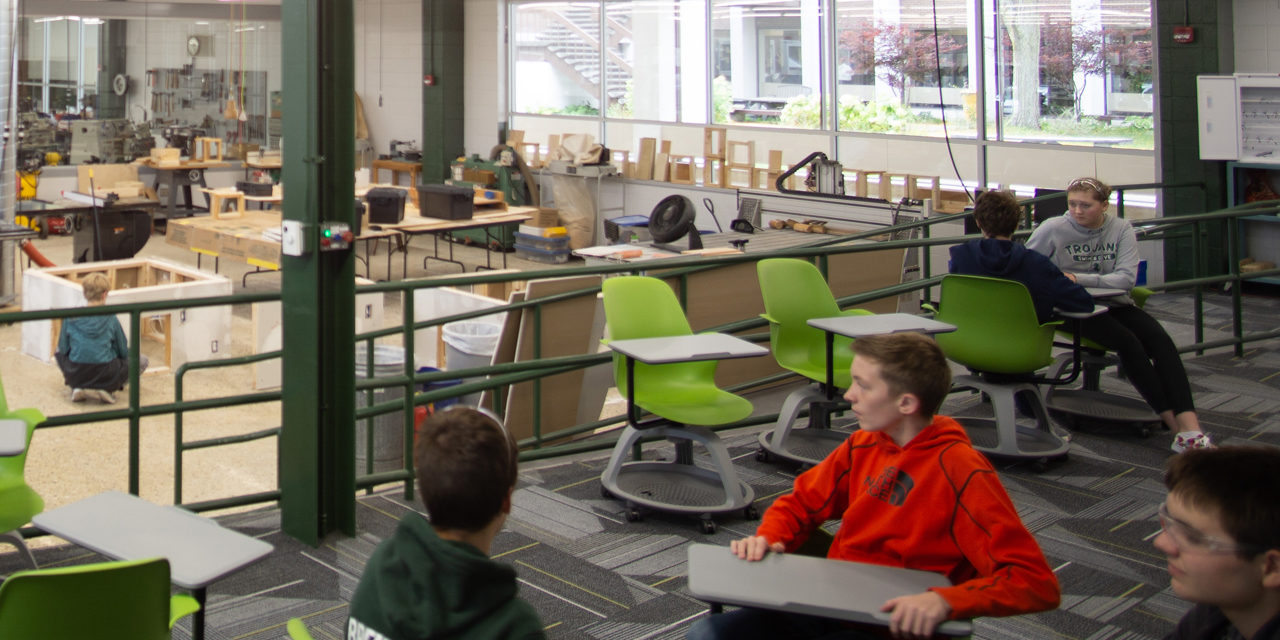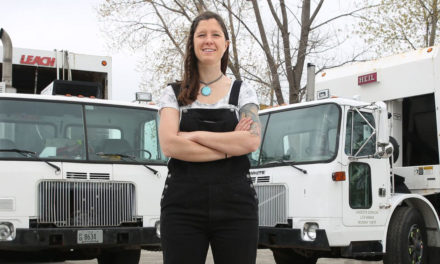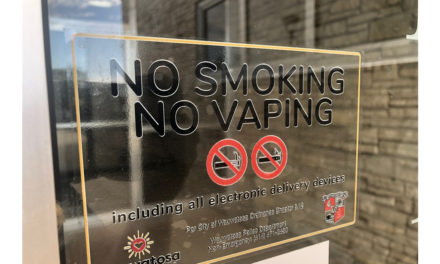A successful school referendum sets the future of public education
by Rick Romano
The 2018 passage of the Wauwatosa School District’s $124.9 million referendum is the culmination of careful planning including communicating the need to local voters. The plan worked – 61 per cent of 15,494 voters said yes to the expenditure.
The referendum victory by a 3-2 margin already has generated a significant amount of design work and construction across the district’s 14 school buildings. That will continue over the next two school years.
The upgrade in facilities, such as the the complete replacement of several schools and the addition of new elements to school campuses, is paired with changes that will be less visible public. Those changes are designed to provide not only new millennium friendly technical capabilities, but also the necessary heating, cooling and other infrastructure comforts to make those spaces effectively work for a student population that has remained steady.
For what is estimated as a $188.00 increase in taxes for $100,000 of property value, each district school building is getting, at minimum, those complete mechanical upgrades. That priority was fueled by the fact that the district has spent more than $42 million over the past 16 years to maintain 14 buildings.
While the district estimated its regular maintenance has extended the life of some operating systems two to three times their life expectancy, the buildings are on average 73.5 years old. The district’s reported costly emergency repairs have increased to the point of not being fiscally responsible.
As part of the upgrades, all schools will have new entrance designs that emphasize safety by featuring check-in areas separate from the school population.
Accomplished so far
Some of the more visible physical changes are happening at the campuses of Lincoln and Underwood Elementary Schools.
At Lincoln, where the south building was razed, new masonry walls for a new gymnasium are being constructed, and steel support beams are being put into place indicate the added space connecting the new building with the existing structure.
At Underwood, where a new school is being built to replace the existing one, masonry and steel components are rising on the new site at the north side of the property. The footings, foundation and masonry stair tower in the classroom wing was completed in September. Other ongoing work includes the foundation for a variety of spaces including classrooms, art and music room as well as the front entrance and lobby.
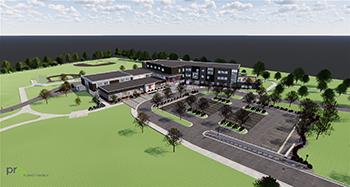
Completed outdoor work at East High School includes new parking lot at the southeast end of the campus and the installation of field turf for athletics on the south side.
Indoor and less visible work also was completed at Roosevelt Elementary included drywall patching and painting, floor refinishing, installation of door hardware, relocation and renovation of a secure entry, newly upgraded air handing and miscellaneous mechanical work.
Similar work was completed at West High School where, in addition to mechanical upgrades, the Center for Design and Innovation has a new shop entry, dust collection system and flooring.
Following the Progress
Construction progress is fluid and ongoing, so the school district regularly posts updates in narrative as well as photos along with background information about the referendum. For more information, go to www.wauwatuosaschools.org and click on the construction/referendum button.
Leadership views
Supt. Phil Ertl said he was pleasantly surprised about the margin of referendum approval,
“You go into this and you look to engage your community to inform” he said. “We had a good amount of support from community leaders who did a great job of communicating the needs.”
He said it is important to provide school environments that look similar with equal building access and, of course, safety.
Instructional excellence also was at the core of the district’s over-all remake.
“There is a lot more expectation for providing spaces that promote collaborative learning and skills with bigger spaces,” Ertl said, noting that common spaces needed to be more flexible, with even furniture being flexible for various learning activities beyond the classic classroom configuration.
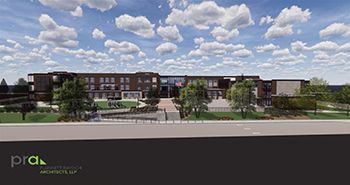 It also was important to maintain the district’s historical structures such as the main building at Lincoln, he said.
It also was important to maintain the district’s historical structures such as the main building at Lincoln, he said.
“Wauwatosa is very proud of its history,” Ertl said. “We wanted to recognize that because it’s symbolic of our community.”
Lisa Lawless, a local attorney with school district children, has served as co-chair of the Facilities Advisory Committee along with Ben LaMacchia. She said the referendum’s success is a result of uniquely widespread involvement in studying the district’s needs and communicating the results to the entire community.
“We have gotten hundreds of people involved,” Lawless said. “There has been a lot of input which has helped the process and helped pass the referendum. We also appreciated the input from facilities personnel who provided information about the boilers and other equipment that needed so much maintenance. That helped us understand the need to replace those things. We continue to do meetings to keep people involved in the design.”
Lawless and Supt. Ertl said the referendum’s success reflects the community’s desire to ensure the viability of neighborhood schools and the commitment to quality education.
“I think that people in Tosa are very community minded,” Lawless said. “Everyone wants Tosa to be attractive. Even people who don’t have kids in the school district know that the investment is important. It is a legacy that we are leaving the city.”
Anatomy of a Referendum
In June of 2018, the FAC made a recommendation to the Wauwatosa School Board for proposed long-range master facilities planning and solutions which included the recommendation to pursue a $125 million facilities referendum to bring all WSD schools up to a base level standard on the following metrics: • Building maintenance and repairs • Safety and Security •HVAC/air quality • Flexible modern learning environments including an upgrade of technical education spaces •ADA accessibility.
In August 2018, the Wauwatosa School Board approved the ballot language and finalized the project scope.
September-November of 2018 the District worked to inform the community of what was on the ballot, what the need was and why, what the tax impact was, etc. with three mailings to all Wauwatosa residents, two Open Houses, a forum for community leaders, and more than 20 presentations to various community groups.
A Gift Beyond the Referendum
Designed to Make a Splash
A $5 million gift from two Wauwatosa East alums is fueling the renovation of the school’s aquatic center, a project that is separate from but timed well to coincide with the work related to the referendum.
The gift from 1951 grads John and Tashia Morgridge will help renovate the existing space as well as add lanes and depth to accommodate standard competitive swimming meets.
The school board earlier this year reportedly also approved a matching expenditure tom complete the project which will include significant structural work.

